環球信息:傳統文化案例(一) | 巧用多樣文化元素,讓中華文化在英語課堂開花!
中國擁有五千年的文明發展史,中華優秀傳統文化是中國文化的主體部分,是先輩們傳承下來的豐厚的歷史文化遺產。它不僅記錄了中華民族和中國文化發生、演化的歷史,而且作為世代相傳的思維方式、價值觀念、行為準則、風俗習慣, 滲透在每個中國人的血脈中,影響著今日之中國人的思維方式和行為方式。
 【資料圖】
【資料圖】
隨著經濟全球化的推進,英語作為國際通用語言,在國際交往中的角色愈發重要,英語學科對我國培養具有跨文化理解力、跨文化交際能力的人才具有重要意義,英語教師正肩負著培養新時代人才的重要使命。
基于此, 英語教師應從課堂做起,將中華優秀傳統文化融入教學,這不僅能夠豐富教學內容、增強學生興趣,更能培養學生的家國情懷,為培養具有創新精神和優秀的跨文化交際人才奠定基礎。
基于以上思考,筆者對我校中高年級學生進行了英語課堂中融合傳統文化相關的問卷調查。綜合調查問卷結果及我校現階段中華優秀傳統文化教育現狀,得出以下結論:
● 絕大部分學生對中華優秀傳統文化學習有興趣,并且學習興趣較高。
● 絕大部分學生認為在英語課中融合中華優秀傳統文化有必要,并認為應該學習和發揚優秀傳統文化。
● 大多數學生認為在英語課中融合中華優秀傳統文化的意義是用英文傳播文化,拓寬知識面的同時增強民族自豪感,培養愛國情懷。
● 大部分學生希望通過英語課中豐富的中華優秀傳統文化資源激發自己的學習興趣。
● 大多數英語課堂中,中西方文化是有分裂現象的,學生獲取中華優秀傳統文化知識的途徑較為單一。
● 大多數英語教師在授課時,偶爾會滲透中華優秀傳統文化知識,并且多為書上內容。
● 大部分學生不會或只能用英語介紹一點中華優秀傳統文化。
● 學生希望在英語課中學習傳統節日習俗、名勝古跡、民間藝術、飲食文化、中華經典故事等內容,并希望開展古詩詞翻譯創作活動。
● 大部分學生更愿意通過情境對話、角色扮演及小組交流討論的形式學習中華優秀傳統文化。
結合調查結果,筆者在課堂中開展了中國優秀傳統文化融入英語課堂的實踐研究。
一
諺語與詩歌
利用課前熱身時間,給學生欣賞一些傳統文化中的諺語及詩歌,將它們翻譯成英文并帶領學生朗讀,體會語言之美、感悟句中哲理。例如——
早起的鳥兒有蟲吃
The early bird catches the worm.
驕傲使人落后
Pride goes before, and shame comes after.
在學習詩歌《春曉》后,請學生以小組合作的形式,將詩歌譯成英文,注意音韻和音律。以下為孩子們較為成功的作品——
No aware of the spring morning,
I hear birds singing everywhere.
How many flowers have withered,
in the wind and rain last night?
此外,可以結合書中的故事,引出相關諺語。如教授人教版一年級起點五上 Make Friends 故事內容時,主人公小狗選擇朋友總挑三揀四,嫌棄大象體格龐大,嫌棄蝴蝶微不可見。學完故事后, 請學生利用諺語,總結幾條給主人公的建議,孩子們提到:
金無赤足,人無完人
Every man has his faults.
尺有所短,寸有所長
Everything has its strengths and weaknesses.
三人行必有我師焉,則其善者而從之
When three are walking together, I am sure to find teachers among them. I will select their good qualities and follow them.
學習英語詩歌時,同樣可以給出中文譯文,讓學生同時誦讀英文詩歌和中文譯文,體會中文的博大精深和語言之美。比如——
【原文】
You say that you love rain,
but you open your umbrella when it rains.
You say that you love the sun,
but you find a shadow spot when the sun shines.
You say that you love the wind,
but you close your windows when wind blows.
This is why I am afraid,
you say that you love me too.
【詩經版】
子言慕雨,啟傘避之。
子言好陽,尋蔭拒之。
子言喜風,闔戶離之。
子言偕老,吾所畏之。
【七律版】
江南三月雨微茫,羅傘疊煙濕幽香。
夏日微醺正可人,卻傍佳木趁蔭涼。
霜風清和更初霽,輕蹙蛾眉鎖朱窗。
憐卿一片相思意,尤恐流年拆鴛鴦。
將中文諺語、詩歌與英文相結合的課堂實踐,大大激發了學生的學習興趣,幫助孩子們實現中西方文化的融會貫通,讓他們在學習英文知識的同時,也深刻的領悟了中文之美和意境深遠。
二
名勝古跡與傳統習俗
假期前后,在課堂上留出時間,讓學生查找國內的旅游勝地,并就當地民俗民風做簡單介紹,如蔚縣以剪紙和打鐵花聞名,陜西以秦腔唱調和面食聞名等。 這一任務設計使得學生興趣濃厚,很容易記住自己感興趣的旅行地名稱和習俗,久而久之,學生們收集到很多旅行勝地及傳統風俗知識,學生們也會在寫作中進行拓展延伸。
此外,遇到合適的教材內容,可以有意識地滲透傳統文化知識。如人教版一年級起點英語四年級上冊 Travel Plans 講授杭州時,利用 《飲湖上初晴后雨》作為導入,引導孩子們思考古詩中描述的是哪個旅行勝地,然后出示西湖的四季美景,利用四句古詩 “花滿蘇堤柳滿煙”、“紅衣綠扇映清波”、“一色湖光萬頃秋”、“白堤一痕青花墨” 請孩子說一說四句詩分別描述了西湖的哪個季節,能看到什么景物,有什么感受等,從而引導學生充分體會和全方位感受西湖之美。之后,給孩子們講述西湖十景和《白蛇傳》的民間傳說,使孩子們對西湖有更加全面深入的了解。
在介紹旅行意愿的的時候,學生寫到:I want to go to the West Lake. I want to see the beautiful scenery around the lake and I want to row a boat. The scenery there is beautiful all year around. I heard a legend about dragon and phoenix in the West Lake. I think it"s romantic and mystic. I also want to drink Longjing Tea and visit The Silk Museum. They are famous in Hangzhou.
學生圍繞西湖,敘述了唯美優美的傳說、龍井茶和絲綢博物館等特色。 這樣的練習使學習更加立體,孩子們對于中華文化的知識積累和語言表達也更加豐富。
再比如學習英國白金漢宮時,結合中國的故宮, 請學生對比兩個國家皇宮的不同之處。學生通過搜集資料發現,歐洲的皇宮多著力在二維的平面和三維的立體結構,重視的是建筑整體與局部,以及局部之間的比例、均衡、韻律等形式美原則,而我國的皇宮講究的是對稱的、有規律的走向,每一處宮殿都由若干單座建筑和一些圍廊、圍墻之類環繞成一個個庭院而組成。重要的建筑都安置在縱軸線上,次要房屋安置在它左右兩側的橫軸線上。 中國傳統建筑無論大小通常都有這樣預定規劃,有著對稱的和諧之美。
通過介紹祖國的風景民俗,并進行中西方文化對比,學生不僅提升了英語口語水平,漸漸養成了關注身邊英語的習慣,同時也對中華博大精深的文化加深了解,提升了批判性思維和跨文化理解力。
三
中華飲食文化
與許多國家相比,中餐相對更加豐富多彩。因此,在講授與食物相關的內容時,可以教學生一些常見的中餐英文表達并與西餐作對比,比如中餐的主食多為 steamed bread、rice porridge、rice、dumplings;而西餐主食多為 hamburger、bread、sandwich。中餐特色食物包括 roast duck、hot pot、spring rolls 等;而西方特色食物包括 hot dog, pizza, beef steak 等。
筆者還會在課上模擬真實的點餐環境,讓學生體會中餐和西餐不同的用餐環境及用餐禮儀。如中餐用筷子,西餐用刀叉;中餐廳比較熱鬧,大家喜歡邊吃邊聊;西餐廳則比較安靜……從而將課本中所學的語言和真實的生活構成聯系。比如學習 Ordering Food 時,上課伊始在教室中創設餐館就餐情境,為與點餐相關的語言學習做好準備;課上利用菜單和不同的飲食文化進行點餐的語言操練,幫助學生感知、體驗、運用語言;課后排演點餐模擬劇,貼近生活,鞏固語言。孩子們沉浸在這樣一種充盈著中華飲食文化氣息的氛圍中,英語學習的欲望被充分激發,真正做到了學以致用。
四
中華傳統節日
中華文明源遠流長,獨有的傳統節日魅力無窮。在學習節日單元時,課本上呈現的是圣誕節、萬圣節等節日,因此筆者將中國傳統節日如春節、端午節、中秋節等滲透其中,與西方節日進行對比。
首先,提供豐富的學習材料,如關于節日的動畫視頻、故事性小語篇等,幫助學生形象地了解傳統節日的由來、慶祝方式、特色食物等。
在學生通過閱讀掌握了更多傳統節日的知識和表達后,給學生布置小組表演的任務。請學生在充分了解節日的前提下,小組合作表演出這個節日最有特色的場景,讓學生學以致用,同時增強文化自信。
五
英語學科實踐活動與傳統文化融合
語言學習的最終目的是運用。關于傳統文化的英文表述,學生必須在實踐中運用,方能達到掌握語言、接受傳統文化熏陶的目的。因此, 筆者積極創造實踐和鍛煉的平臺,使學生在活動中實踐所學,激發興趣,獲得學習成就感和民族自豪感。
為了體現學生 “用英語講好中國故事” 這一理念,我校開展了兩屆英語故事達人賽活動,鼓勵學生堅持進行英語閱讀的習慣,提高學生的英語表達能力,鼓勵學生用英文講述中國傳統故事,同時搭設平臺展示學生的英語風采。
孩子們為全校師生帶來了一場視覺和聽覺的盛宴。經過層層選拔,進入決賽的選手們在語篇深度和題材廣度上下功夫。他們的朗誦圍繞中國傳統文化, 大到家國情懷、四大名著、傳統技藝,小到民間傳說、古詩英譯、成語故事,題材豐富,圍繞時事、歷史、體育、藝術、名人、中華傳統故事等多個角度開展講述。
“
中華優秀傳統文化與英語教學的融合,幫助老師們走上了與時俱進的教學改革之路,使教師真正成為研究者、創造者。筆者也在課堂教學的實踐中,不斷得到陶冶、提升,并不斷創新、飛躍。未來,筆者將進一步研究如何實現傳統文化與英語課堂的有機融合,做到讓每個孩子在學習英語知識、了解世界的同時,更加了解中華文化的博大精深,讓每個孩子繼承并發揚中華民族傳統文化的優秀精髓!
六
教學案例
★內容定位
這是一節小學英語的學科拓展課。語言是文化的載體,對于我們而言,英語是我們展望世界的窗口,也是宣揚我國文化思想的橋梁。中國傳統節日,形式多樣、內容豐富,蘊含著深邃豐厚的文化內涵,不僅清晰地記錄著中華民族豐富而多彩的社會生活文化內容,也積淀著博大精深的歷史文化內涵。本課把中國傳統文化學習與英語學科教學相結合,幫助學生把語言應用到生活中去,培養學生傳承與弘揚傳統文化的能力。
本課通過視頻、音頻和圖片等多媒體資料,引導學生感受傳統節日的內在情懷,通過英語思維和表述方式進一步了解傳統習俗,學習傳統文化在英語語言環境下的知識再現和輸出方式,不斷增強學生傳承中華傳統文化、弘揚中華傳統美德的意識。
★教學目標
1.能夠基本了解并用英語談論春節、端午節、中秋節、國慶節等傳統節日的由來和有關習俗。 2.能夠通過各個節日特點和節日習俗,深層次了解中華歷史文化概念,向朋友介紹中國。 3.能夠增強名族自豪感,強化傳承和發揚中華傳統文化、弘揚中華傳統美德的意識。★教學設計
★教學過程
環節一:春 節——了解文化傳承
師:Hello, boys and girls! I’m Coco. Welcome to my English class. I’m very happy to welcome a new student today.
Jenny:Hello, everyone. My name is Jenny. I’m nine years old. I’m from Sweden. I live in Dalian now. Hello, Coco. I’m very interested in China, can you tell me more about China?
師:Of course, Jenny. Today we’ll talk about Chinese Festivals.
Jenny:Wow, that’s so great. Thank you.
師:You’re welcome. There are many festivals in China. First, let’s know more about Chinese New Year, we also call it the Spring Festival. It has a long history, more than 4000 years. The Spring Festival is the most important one for Chinese people.
Jenny:The Spring Festival is lively. Coco, what do Chinese people usually do to celebrate it?
師:Ok, let’s know more about it together. Look. Sam’s family are coming to Daming’s home at Chinese New Year. What do they do at Chinese New Year?
視頻:(課文“Happy New Year!” )
生:They eat dumplings at Chinese New Year.
師:I like dumplings. They look like “Yuanbao”. In ancient times, people usually eat dumplings. So it becomes a kind of food culture.
生:They have firecrackers at Chinese New Year.
師:Children like firecrackers. People set off the firecrackers to welcome the coming of the new year. In fact, we do many things to celebrate Chinese New Year. Now, let’s listen.
(播放音頻:介紹春節習俗)
師:It’s really lively. So children, are you happy.
生:Yes, we are very happy.
師:We have many customs about this festival. Can you remember? Let’s try.
圖片:(有關春節習俗的思維導圖)
師:Good job! Boys and girls, do you find that“red”is the main colour of this festival? For example, firecrackers, lanterns, duilian , Chinese Fu , lucky money, red clothes and so on.
生:Yes, they are all red.
師:Because red means good luck and happiness in China.
Jenny:The Spring Festival is really very interesting. I like it. All the things are red at this festiva. Can I call it a red festival?
師:That’s right.
環節二:端午節——回顧歷史文明
Jenny:Is there a green, blue or yellow festival?
師:Yes, I think maybe we have a green festival. Look, Jenny!
Jenny:What’s this? It’s green.
生:Jenny, this is rice dumpling, zongzi . We can eat rice dumplings at the Dragon Boat Festival.
師:Great! Our Chinnese also call it Duanwu Festival, Duanyang Festival or Double Fifth Festival.
Jenny:Coco, can you tell me more about it?
師:OK. To know more about it, we should know the following three questions. When is the Dragon Boat Festival? Who is the Dragon Boat Festival to remember? What do we do at the Dragon Boat Festival? Now, let’s watch a video.
(播放視頻:介紹端午節由來)
師:That is the origin of the Dragon Boat Festival. Now, can you answer the questions? When is the Dragon Boat Festival? Please have a try.
生:The fifth day of the fifth lunar month is the Dragon Boat Festival.
師:Good try! Let’s go on. Who is the Dragon Boat Festival to remember?
生:Qu Yuan.
師:Very good. The Dragon Boat Festival is a day to remember Qu Yuan, who was a great patriotic poet in the Chinese history. The last one,what do we do at the Dragon Boat Festival?
生:We eat rice dumplings and row dragon boats at the Dragon Boat Festival.
師:Good! Rice dumpling is a traditional food of the Dragon Boat Festival. And the festival is also known for its dragon boat races. Since you have known more about it, can you talk about it in pairs?
(視頻:關于端午節的學生對話)
師:Good job!
Jenny:The Dragon Boat Festival has a long history. Qu Yuan is a great poet in China. People eat rice dumplings and row dragon boats to remember Qu Yuan. I really like rice dumplings.
師:I like rice dumplings, too.
環節三:中秋節——感悟鄉音情懷
師:Look, Jenny, what’s in my hand?
Jenny:Is it a cake? It’s round and yellow, like a round moon.
師:You’re right. It looks like the moon. It’s a moon cake. You can try one.
Jenny:Do you eat moon cakes at the Spring Festival or Dragon Boat Festival?
師:No, we eat moon cakes on a special festival. Look! A beautiful full moon is bright in the sky. He is Su Shi. He wrote this poem when he missed his brother. Do you know this traditional festival?
生:It’s the Mid-Autumn Festival.
師:Excellent! On Mid-autumn day, we will miss our family and hometown. The Mid-Autumn Festival is as important as the Spring Festival. And there is always a beautiful full moon which is the brightest and roundest in the whole year. There are many stories of this festival. Who knows?
生:I know the story of Chang’e .
師:Good girl! The most popular one is“Chang’e Flying to the Moon”. It is said that, on Mid-autumn day, people can see Chang’e dancing on the moon. Boys and girls, how do you celebrate this festival? Let’s welcome our friends. They have something to say .
生:Hello, everyone. Look at my picture. In the picture, there is my grandma, father, mother, sister, brother and I. We get together to have a big dinner at the Mid-Autumn Festival. We enjoy the moon and eat moon cakes. We are very happy. I love my family.
(圖片:學生繪畫一)
師:Well done! On Mid-Autumn Day, families get together to have a big dinner. It’s a day for family reunion. Family is very important to Chinese.
生: Hi, this is my picture. On Mid-Autumn Day, my parents and I go back to our hometown. We get together with my grandparents. My hometown is Dalian. It’s a beautiful seaside city. I love my hometown.
(圖片:學生繪畫二)
師: Wonderful! As the saying goes “The moon in your hometown is always the brightest and roundest.” No matter where you are, east or west, home is the best.
Jenny:It’s a lovely festival. The mooncakes are yummy. Change’s story is amazing. Our classmates’ pictures are wonderful. I learned a lot and I’m very happy now.
環節四:國慶節——振奮華夏崛起
師:I’m very glad you’re happy in China. The longer you stay in China, the more you’ll love China. Look at the people, they are so happy. Where are they?
(展示圖片:天安門前歡度國慶佳節)
生:They’re at the Tian’anmen Square. I can see some national flags and smiling faces.
生:It’s our National Day! And it’s a festival for all Chinese people to celebrate. So everyone is happy.
師:You’re so great! Look at the picture. Do you know this great man?
生:He is chairman Mao.
師:Right! On October 1st 1949, the great leader Mao Zedong, announced the foundation of the People Republic of China. Now, let’s review it.
(播放視頻:開國大典片段)
生:Wow, it’s amazing!
師:Yes, therefore, October 1st is our National Day. It’s a great day for Chinese. Some children can’t wait to share something about National Day with us. Let’s have a look.
(播放視頻:關于國慶節的學生采訪)
師:The girl want to go to the Tian’anmen Square. How about you?
生:Me, too!
師:OK, let’s go to the Tian’anmen Square together.
(播放視頻:國慶節閱兵視頻)
師::After watching the video, what do you think of it?
生:I’m so excited! Our motherland is very beautiful and strong.
生:China is very big, and we are united.
生:I’m proud that I’m Chinese. Best wishes to my country.
生:I love you, China!
師:I’m proud of you, children. I believe our country will become stronger and stronger. Bless you, my motherland.
Jenny:October 1st is China’s national day. People are very happy. I also want to go to Beijing. China is really a great country.
師:Yes, Jenny. China welcomes friends from all over the world.
Jenny:Thank you, Coco. In this class, I know the Spring festival, the Dragon Boat Festival, the Mid-Autumn Festival and National Day. Are there any other festivals in China?
師:Of course, Jenny. We also have the Lantern Festival, the Qingming Festival, the Double Seventh Festival, the Double Ninth Festival and so on. Chinese festivals include history, culture and spirit. Only if we know more about them, we can know more about China. As we know, Chinese people are very warm-hearted, and we’ll give friends some presents. Today, I’ll give Jenny and all of you a special present. I hope you’ll have a nice day!
★案例評析
高品質課堂實踐所追求的是教育立意與育人境界的高尚,本節課把中國傳統文化學習與英語學科教學相結合,培養學生傳承中華傳統文化、弘揚中華傳統美德的意識與能力。以下從《高品質課堂的評價指標》中“學生主體發展”維度對本課例進行評析。
一、樂學(情感表達)
“樂學”表達的是學習過程中一種積極的情感投入,本課中國節日這一主題是和學生息息相關的語言學習素材,成長的過程中學生時刻都會感受到這些傳統文化帶給他的影響,話題契合學生的真實生活,容易喚起他的豐富情感與體驗,所以教學中學生表現出了積極投入,踴躍思考,樂于表達的學習行為。
二、能學(態度表現)
“能學”除了學生在學習過程中所表現出的認真、進取、勇于嘗試等品質,通過英語語言的表述方式進一步了解傳統習俗,學習傳統文化在英語語言環境下的知識再現和輸出方式,從課例實錄來看,學生在完成語言能力培養目標的基礎上理解并達成了以上育人目標,樹立起了弘揚中華傳統文化的意識。
三、會學(思維表征)
本課教師聚焦思維自覺性、深刻性、批判性、靈活性、創造性的培養目標,通過教學問題、環節的設計積極塑造學生良好的思維品質。如,使用思維可視化工具即The customs of the spring festival的思維導圖,訓練學生思維的完整性;教師在引導學生得出The Spring Festival is a red festival. 后激發學生生成新的問題Is there a green, blue or yellow festival? 巧用通感豐富學生對節日的多元理解,訓練學生思維的靈活性與創造性;課程結束時教師引導學生認識中國節日蘊涵的厚重歷史、文化與民族精神,培養學生思維的深刻性。
四、學會(目標達成)
本課通過視頻、音頻和圖片等多媒體資料,引導學生感受傳統節日的內在情懷,幫助他們樹立正確的世界觀、價值觀。同時教學也指向于學生學習能力的習得。本課在學習了解春節、端午節的風俗習慣之后,進入中秋節的學習時,教師更多是運用方法的遷移與指導,用問題Boys and girls, how do you celebrate this festival?為學生搭建自主學習的腳手架、語言輸出的平臺,以培養學生用所學知識解決新問題的能力。
總之,教學是要實現學生這一關鍵主體的全面發展、個性發展與可持續發展,本課在高品質課堂理論框架指導下引導學生完成了“樂學——能學——會學——學會”這一梯度化的培養,為學生的主體性發展提供了可遵循的路徑。
(點評人:李瑛,甘肅省蘭州市西固區福利東路第二小學校長,教育博士。)
⑧此例作為“課堂立德樹人”精品創新課,在2020年中國教育電視臺課堂直播欄目《名師課堂》上展播。唐國君,北京小學大連經濟技術開發區華潤海中國分校;課程 設計導師:李鐵安,中國教育科學研究院研究員。
2023年5月13日-14日(周六、周日)
新課標下以核心素養為基礎的單元整體教學觀摩研討會
*1
溫馨提示
因為公眾號平臺改變了推送規則,如果想及時看到明師俱樂公眾號的內容推送,需要大家閱讀后,在 文末右下角點一下“在看〞或者“星標”,這樣公眾號的文章才會第一時間出現在您的訂閱列表里面。
更多會議內容
關注明師俱樂部
倒計時 | 新課標視域下‘舊’教材的‘新’使用與資源建設專題研討會(重慶場)
2023征稿:英語教學教研成果,收錄、展示、出版通道已開啟!
限時免費 | 80多套火爆英文課堂的PPT動畫課件!語法/詞匯/句子全搞定!
免費領取 | 教育部都點贊的鼎鼎大名牛津書蟲系列1-6級PDF+音頻!
ChatGPT火出圈,英語老師如何用起來?
衡水體英文書寫視頻教程(附PPT教學課件+英文字帖),可下載領取!
強烈推薦 | 超實用的英語提分神器,掌握優秀字體秘訣!
10000套教師PPT課件模板,直接領取!
基于新課標的江蘇名師單元整體教學逆向設計(附案例)
“新課標”下教學評一體化的英語單元整體教學設計(附案例)
100個經典中國傳統文化英文動畫來了,春節假期最好的學習素材!
200篇英語干貨合集,給身為英語老師的你送一份新年禮物!
教學資源、精彩活動、趣味互動
福利折扣、在線咨詢
明老師微信ID:iminglaoshi
(請不要重復添加明老師,謝謝 )
關鍵詞:
-
 【實探】中藥價格狂飆過后的“藥都”亳州:貨車司機閑坐等接單 【實探】中藥價格狂飆過后的“藥都”亳州:貨車司機閑坐等接單,當歸,黨
【實探】中藥價格狂飆過后的“藥都”亳州:貨車司機閑坐等接單 【實探】中藥價格狂飆過后的“藥都”亳州:貨車司機閑坐等接單,當歸,黨 -
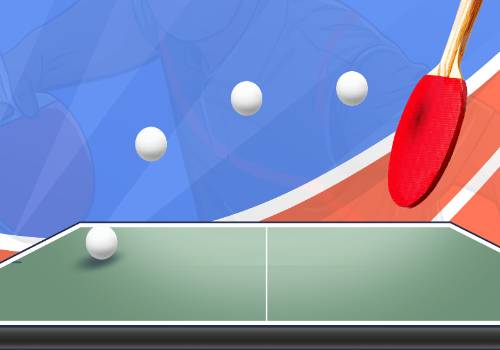 馮奎章_馮奎 1、馮奎賣妻是明朝末年的故事。2、《馮奎賣妻》保定府有一對夫妻叫馮奎
馮奎章_馮奎 1、馮奎賣妻是明朝末年的故事。2、《馮奎賣妻》保定府有一對夫妻叫馮奎 -
 粵電力A最新公告:預計上半年凈利潤8億元-9.5億元 同比扭虧為盈 粵電力A公告預計上半年凈利潤8億元95億元去年同期虧損1372億元同比扭虧
粵電力A最新公告:預計上半年凈利潤8億元-9.5億元 同比扭虧為盈 粵電力A公告預計上半年凈利潤8億元95億元去年同期虧損1372億元同比扭虧 -
 李玟媽媽首度發聲,公開吐槽外國女婿缺點,李玟曾為老公整晚痛哭 閱讀此文前,誠邀您點擊一下“關注”,方便您隨時查閱一系列優質文章,
李玟媽媽首度發聲,公開吐槽外國女婿缺點,李玟曾為老公整晚痛哭 閱讀此文前,誠邀您點擊一下“關注”,方便您隨時查閱一系列優質文章, -
 海口迎來暑期學車潮 這樣做可以避免學車“坑” 原標題:海口迎來暑期學車潮這樣做可以避免學車“坑”新海南客戶端、南
海口迎來暑期學車潮 這樣做可以避免學車“坑” 原標題:海口迎來暑期學車潮這樣做可以避免學車“坑”新海南客戶端、南 -
 【歌詞&羅馬音】デーモンロード デーモンロードプレイバック俯いてどうしたpureibakkuutsumuitedoushit
【歌詞&羅馬音】デーモンロード デーモンロードプレイバック俯いてどうしたpureibakkuutsumuitedoushit
-
 【實探】中藥價格狂飆過后的“藥都”亳州:貨車司機閑坐等接單 【實探】中藥價格狂飆過后的“藥都”亳州:貨車司機閑坐等接單,當歸,黨
【實探】中藥價格狂飆過后的“藥都”亳州:貨車司機閑坐等接單 【實探】中藥價格狂飆過后的“藥都”亳州:貨車司機閑坐等接單,當歸,黨 -
 東方日升(300118.SZ)擬10股派2元 于7月14日除權除息 智通財經APP訊,東方日升(300118)(300118 SZ)公告,公司2022年年度權益
東方日升(300118.SZ)擬10股派2元 于7月14日除權除息 智通財經APP訊,東方日升(300118)(300118 SZ)公告,公司2022年年度權益 -
 中國蜀塔(08623)擬420萬元收購雅安寶盛金屬材料余下30%股權 智通財經APP訊,中國蜀塔(08623)公布,于2023年7月7日,該公司全資附屬
中國蜀塔(08623)擬420萬元收購雅安寶盛金屬材料余下30%股權 智通財經APP訊,中國蜀塔(08623)公布,于2023年7月7日,該公司全資附屬 -
 南王科技最新公告:擬投建高端環保食品級紙制品項目 南王科技公告,公司擬在廣東省鶴山市鶴山工業城A區設立全資子公司“廣
南王科技最新公告:擬投建高端環保食品級紙制品項目 南王科技公告,公司擬在廣東省鶴山市鶴山工業城A區設立全資子公司“廣 -
 南王科技(301355.SZ):擬設立子公司投資建設高端環保食品級紙制品項目 格隆匯7月7日丨南王科技(301355 SZ)公布,公司于2023年7月7日召開第三
南王科技(301355.SZ):擬設立子公司投資建設高端環保食品級紙制品項目 格隆匯7月7日丨南王科技(301355 SZ)公布,公司于2023年7月7日召開第三 -
 拉夏貝爾(06116):管理人仍有序開展債權申報、債務及資產核查等工作 智通財經APP訊,拉夏貝爾(603157)(06116)發布公告,自公司進入破產清算
拉夏貝爾(06116):管理人仍有序開展債權申報、債務及資產核查等工作 智通財經APP訊,拉夏貝爾(603157)(06116)發布公告,自公司進入破產清算 -
 2023年7月7日江蘇省聚丙烯酰胺價格最新行情預測 中國報告大廳2023年7月7日江蘇省聚丙烯酰胺價格最新走勢監測顯示:蘇州
2023年7月7日江蘇省聚丙烯酰胺價格最新行情預測 中國報告大廳2023年7月7日江蘇省聚丙烯酰胺價格最新走勢監測顯示:蘇州 -
 CCER重啟真的要來了!生態環境部發布公開征求意見通知 CCER重啟真的要來了!生態環境部發布公開征求意見通知,配額,交易,ccer,
CCER重啟真的要來了!生態環境部發布公開征求意見通知 CCER重啟真的要來了!生態環境部發布公開征求意見通知,配額,交易,ccer, -
 云南建投混凝土(01847)附屬高分子公司訂立保理協議 智通財經APP訊,云南建投混凝土(01847)發布公告,于2023年7月7日,該公
云南建投混凝土(01847)附屬高分子公司訂立保理協議 智通財經APP訊,云南建投混凝土(01847)發布公告,于2023年7月7日,該公 -
 明源云(00909.HK)委任梁瑞冰為聯席公司秘書 格隆匯7月7日丨明源云(00909 HK)宣布,司徒嘉怡因其他工作安排,已提呈
明源云(00909.HK)委任梁瑞冰為聯席公司秘書 格隆匯7月7日丨明源云(00909 HK)宣布,司徒嘉怡因其他工作安排,已提呈 -
 彩客新能源(01986)4月21日斥資8.58萬港元回購6.2萬股 智通財經APP訊,彩客新能源(01986)發布公告,于2023年4月21日,該公司
彩客新能源(01986)4月21日斥資8.58萬港元回購6.2萬股 智通財經APP訊,彩客新能源(01986)發布公告,于2023年4月21日,該公司 -
 富祥藥業:7月6日接受機構調研,包括知名機構盤京投資的多家機構參與 2023年7月7日富祥藥業(300497)發布公告稱公司于2023年7月6日接受機構
富祥藥業:7月6日接受機構調研,包括知名機構盤京投資的多家機構參與 2023年7月7日富祥藥業(300497)發布公告稱公司于2023年7月6日接受機構 -
 廣東宏大:預計2023年1-6月盈利,凈利潤同比增20%至30% 廣東宏大發布業績預告,預計2023年1-6月歸屬凈利潤盈利3 02億元至3 27
廣東宏大:預計2023年1-6月盈利,凈利潤同比增20%至30% 廣東宏大發布業績預告,預計2023年1-6月歸屬凈利潤盈利3 02億元至3 27 -
 馮奎章_馮奎 1、馮奎賣妻是明朝末年的故事。2、《馮奎賣妻》保定府有一對夫妻叫馮奎
馮奎章_馮奎 1、馮奎賣妻是明朝末年的故事。2、《馮奎賣妻》保定府有一對夫妻叫馮奎 -
 注意!家里這些物品也要“防暑降溫” 入夏以來,多輪高溫天氣來襲用電需求量較常年同期偏高面對“烤”驗日常
注意!家里這些物品也要“防暑降溫” 入夏以來,多輪高溫天氣來襲用電需求量較常年同期偏高面對“烤”驗日常 -
 2023年愛心售報|小報童帶病堅持來賣報 孩子成長迅速讓家長很欣慰 揚子晚報7月7日訊(記者季宇軒實習生王元釗)7月6日是2023年揚子晚報暑
2023年愛心售報|小報童帶病堅持來賣報 孩子成長迅速讓家長很欣慰 揚子晚報7月7日訊(記者季宇軒實習生王元釗)7月6日是2023年揚子晚報暑 -
 粵電力A最新公告:預計上半年凈利潤8億元-9.5億元 同比扭虧為盈 粵電力A公告預計上半年凈利潤8億元95億元去年同期虧損1372億元同比扭虧
粵電力A最新公告:預計上半年凈利潤8億元-9.5億元 同比扭虧為盈 粵電力A公告預計上半年凈利潤8億元95億元去年同期虧損1372億元同比扭虧 -
 潼關黃金(00340.HK)擬3.39億港元收購宏勇投資100%股份 格隆匯7月7日丨潼關黃金(00340 HK)公告,于2023年7月7日,公司(作為買
潼關黃金(00340.HK)擬3.39億港元收購宏勇投資100%股份 格隆匯7月7日丨潼關黃金(00340 HK)公告,于2023年7月7日,公司(作為買 -
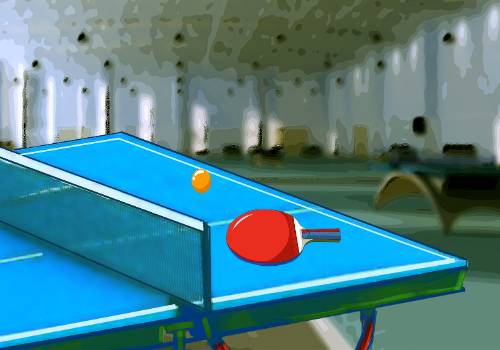 小摩:轉型和AI利好被負面因素抵消 首予IBM(IBM.US)“中性”評級 摩根大通分析師BrianEssex發表研報,首次覆蓋IBM(IBM US),給予“中性
小摩:轉型和AI利好被負面因素抵消 首予IBM(IBM.US)“中性”評級 摩根大通分析師BrianEssex發表研報,首次覆蓋IBM(IBM US),給予“中性 -
 Wolfe下修派拉蒙環球(PARA.US)業績預期 降評級至“跑輸大盤” WolfeResearch將派拉蒙環球(PARA US)的評級從“與同行評級”下調為“跑
Wolfe下修派拉蒙環球(PARA.US)業績預期 降評級至“跑輸大盤” WolfeResearch將派拉蒙環球(PARA US)的評級從“與同行評級”下調為“跑 -
 順豐控股最新公告:4月速運物流業務營業收入146.46億元 同比增長27.29% 順豐控股公告,4月速運物流業務營業收入146 46億元,同比增長27 29%;
順豐控股最新公告:4月速運物流業務營業收入146.46億元 同比增長27.29% 順豐控股公告,4月速運物流業務營業收入146 46億元,同比增長27 29%; -
 青島銀行(03866.HK):提名陳霜及杜寧為董事候選人 格隆匯7月7日丨青島銀行(002948)(03866 HK)公布,董事會于2023年7月7日
青島銀行(03866.HK):提名陳霜及杜寧為董事候選人 格隆匯7月7日丨青島銀行(002948)(03866 HK)公布,董事會于2023年7月7日 -
 深圳大動作!24條舉措 劍指… 作為全國外貿重鎮,深圳在促進外貿穩定健康發展上再加碼!日前,中國人
深圳大動作!24條舉措 劍指… 作為全國外貿重鎮,深圳在促進外貿穩定健康發展上再加碼!日前,中國人 -
 我國人工智能蓬勃發展 核心產業規模達5000億元 7月6日,2023世界人工智能大會在上海世博中心拉開帷幕。圖為參觀者在達
我國人工智能蓬勃發展 核心產業規模達5000億元 7月6日,2023世界人工智能大會在上海世博中心拉開帷幕。圖為參觀者在達 -
 李玟媽媽首度發聲,公開吐槽外國女婿缺點,李玟曾為老公整晚痛哭 閱讀此文前,誠邀您點擊一下“關注”,方便您隨時查閱一系列優質文章,
李玟媽媽首度發聲,公開吐槽外國女婿缺點,李玟曾為老公整晚痛哭 閱讀此文前,誠邀您點擊一下“關注”,方便您隨時查閱一系列優質文章, -
 中國銀河(06881)因可轉債轉股2022年末期股息調整為每股0.22533元 智通財經APP訊,中國銀河(601881)(06881)公布,由于公司于2022年3月24
中國銀河(06881)因可轉債轉股2022年末期股息調整為每股0.22533元 智通財經APP訊,中國銀河(601881)(06881)公布,由于公司于2022年3月24 -
 正業科技(300410.SZ)選舉余笑兵為董事長 智通財經APP訊,正業科技(300410)(300410 SZ)公告,公司董事會同意選舉
正業科技(300410.SZ)選舉余笑兵為董事長 智通財經APP訊,正業科技(300410)(300410 SZ)公告,公司董事會同意選舉 -
 紫金礦業(02899.HK)預計上半年凈利約102億元 同比下降19.2% 格隆匯7月7日丨紫金礦業(02899 HK)公告,公司預計2023年半年度實現歸屬
紫金礦業(02899.HK)預計上半年凈利約102億元 同比下降19.2% 格隆匯7月7日丨紫金礦業(02899 HK)公告,公司預計2023年半年度實現歸屬 -
 中航光電(002179.SZ):擬投資27.2億元在洛陽購置土地建高端互連科技產業社區項目 格隆匯7月7日丨中航光電(002179)(002179 SZ)公布,2023年7月7日,公司
中航光電(002179.SZ):擬投資27.2億元在洛陽購置土地建高端互連科技產業社區項目 格隆匯7月7日丨中航光電(002179)(002179 SZ)公布,2023年7月7日,公司 -
 建發國際集團(01908.HK)根據以股代息計劃發行1.08億股 格隆匯7月7日丨建發國際集團(01908 HK)公布,根據公司以股代息計劃而于
建發國際集團(01908.HK)根據以股代息計劃發行1.08億股 格隆匯7月7日丨建發國際集團(01908 HK)公布,根據公司以股代息計劃而于
熱門資訊
-
 源自福特超級平臺,江鈴福特新款輕客來襲 說起輕客,大家的第一印象總是全順...
源自福特超級平臺,江鈴福特新款輕客來襲 說起輕客,大家的第一印象總是全順... -
 多彩新媒協同多省IPTV加速布局大屏生態圈,“看中國”深度挖掘 智能大屏價值 6月16日,在北京論道暨第25屆中國...
多彩新媒協同多省IPTV加速布局大屏生態圈,“看中國”深度挖掘 智能大屏價值 6月16日,在北京論道暨第25屆中國... -
 出擊!招行信用卡協助警方重拳打擊金融“黑灰產”! 在上海浦東新區某大廈內,掛著“法...
出擊!招行信用卡協助警方重拳打擊金融“黑灰產”! 在上海浦東新區某大廈內,掛著“法... -
 “2022-2023年度中國醫藥制造業百強”出爐,揚子江藥業集團榮登榜首 7月4日,由全國工商聯醫藥業商會、...
“2022-2023年度中國醫藥制造業百強”出爐,揚子江藥業集團榮登榜首 7月4日,由全國工商聯醫藥業商會、...
文章排行
圖片新聞
-
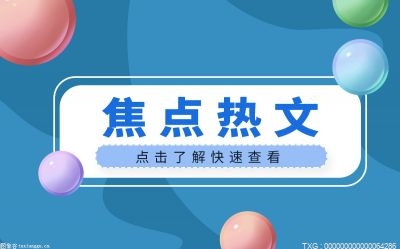 國慶假期懷柔北部山區的紅葉進入最佳觀賞期 吸引游客前來賞秋景 國慶假期,懷柔北部山區的紅葉進入...
國慶假期懷柔北部山區的紅葉進入最佳觀賞期 吸引游客前來賞秋景 國慶假期,懷柔北部山區的紅葉進入... -
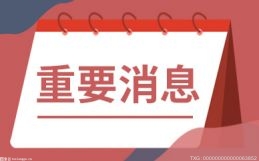 重磅!四川省科創貸款較年初新增620.35億元 同比增長21.22% 記者日前從中國人民銀行成都分行獲...
重磅!四川省科創貸款較年初新增620.35億元 同比增長21.22% 記者日前從中國人民銀行成都分行獲... -
 252項“全程網辦”!川渝兩地企業登記檔案實現跨區域互查 8月30日,記者從省大數據中心獲悉...
252項“全程網辦”!川渝兩地企業登記檔案實現跨區域互查 8月30日,記者從省大數據中心獲悉... -
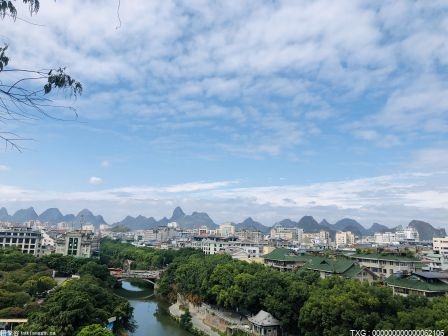 2022年中國國際服務貿易交易會在京舉辦 四川參展企業數量創新高 8月31日至9月5日,主題為服務合作...
2022年中國國際服務貿易交易會在京舉辦 四川參展企業數量創新高 8月31日至9月5日,主題為服務合作...